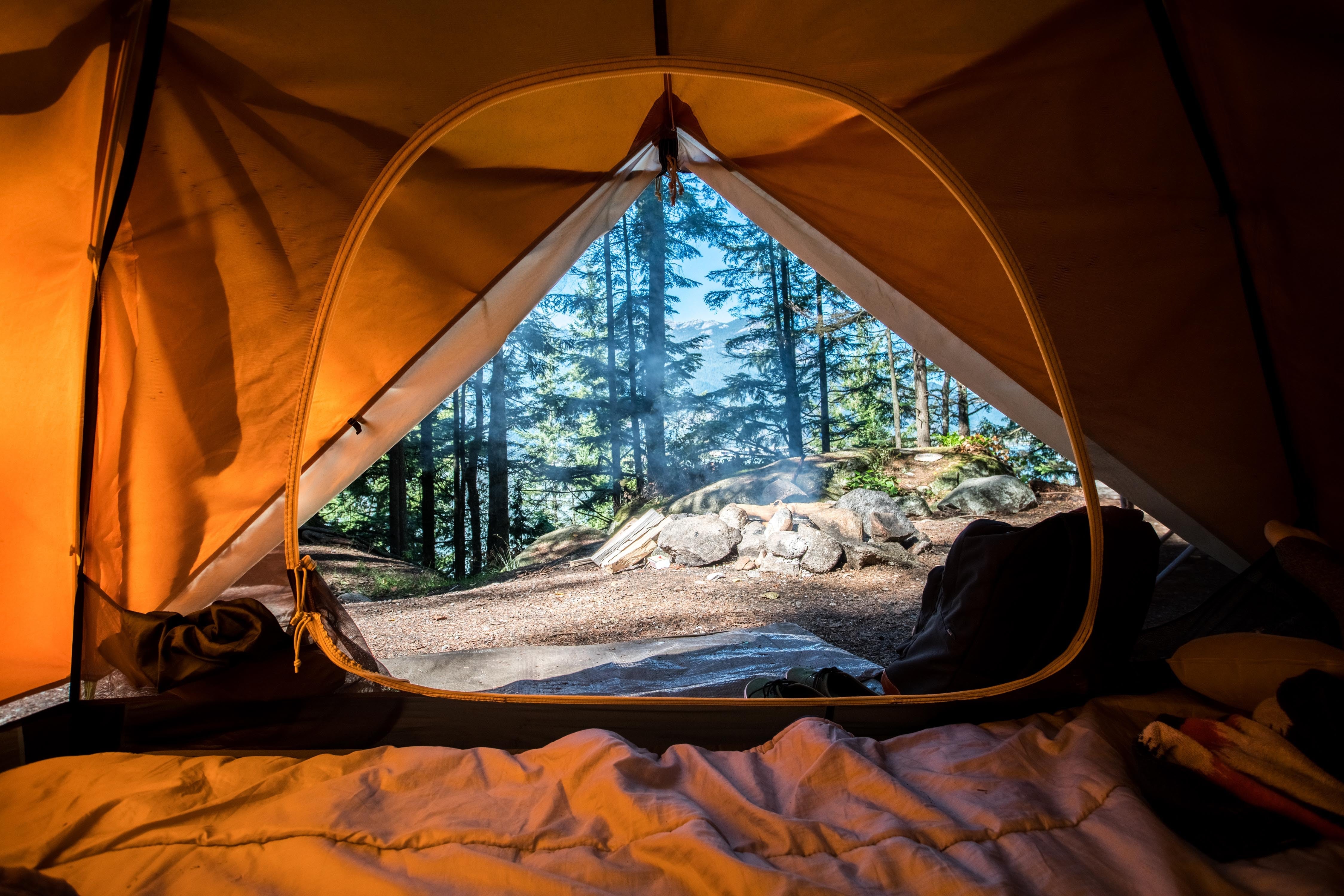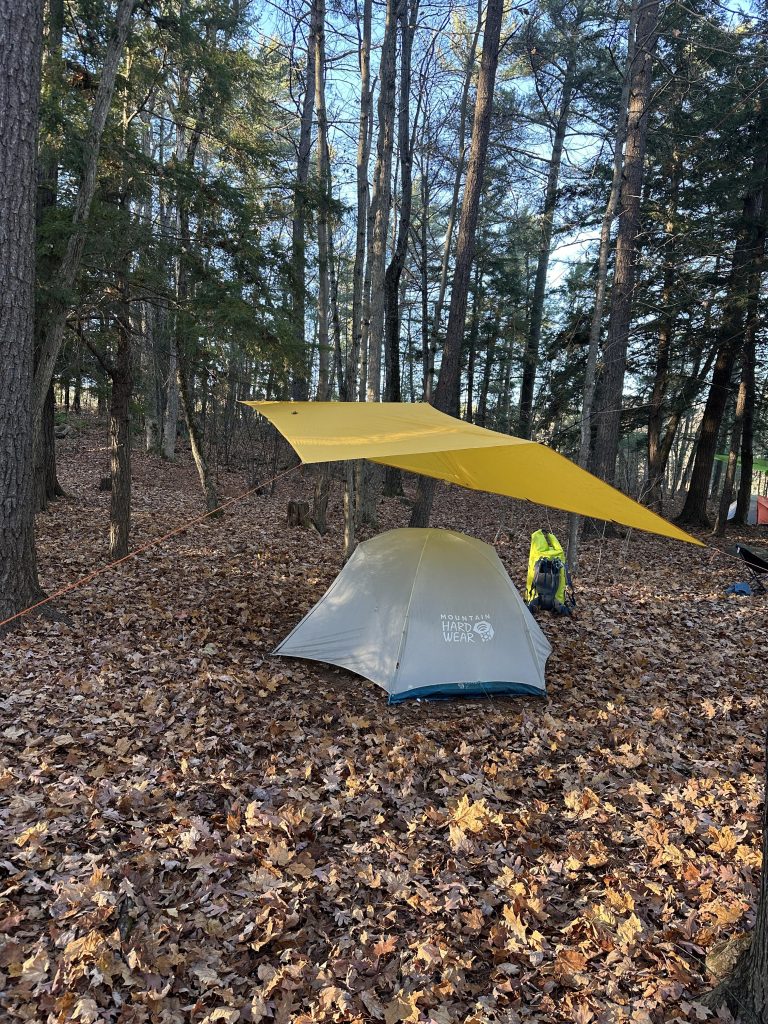When you’re setting up your tent, what you put underneath can make all the difference between a comfortable night and a restless one. You might think the ground is good enough, but a simple layer below your tent can protect you from moisture, sharp rocks, and cold air.
Wondering what’s the best option to keep your tent safe and your sleep cozy? Keep reading, because knowing exactly what to put under your tent will change the way you camp—and help you enjoy every outdoor adventure much more.

Credit: www.baysports.com.au
Ground Protection Options
When camping, placing something under your tent protects it from damage. It also helps keep moisture and dirt out. Choosing the right ground protection makes camping more comfortable and extends your tent’s life.
There are different options for ground protection. Two popular choices are tarps and footprints. Each has its own benefits and uses.
Tarp Benefits And Types
Tarps are a simple and versatile way to protect your tent floor. They are usually made of waterproof material. You can use a tarp under your tent to stop water and sharp objects from causing damage.
There are many types of tarps. Some are lightweight and easy to carry. Others are thicker and last longer. Choosing the right tarp depends on your camping style and weather conditions.
- Polyethylene tarps are heavy but very waterproof.
- Silnylon tarps are lightweight and strong.
- Polyester tarps resist stretching and tearing.
- Mesh tarps provide shade but not waterproofing.
Footprint Advantages
A footprint is a ground cloth made specifically for your tent model. It fits exactly under the tent floor. Footprints offer great protection without adding much weight.
Footprints help stop wear and tear from rocks and sticks. They also keep the bottom of your tent clean and dry. Using a footprint can extend the life of your tent fabric.
- Custom fit prevents water pooling under the tent.
- Lightweight and easy to pack.
- Protects against sharp objects and rough ground.
- Usually made from durable, waterproof material.
Sleeping Pads And Mats
Choosing the right sleeping pad or mat is important for camping comfort. It helps protect you from the cold ground.
There are different types of sleeping pads to fit your needs. Each type has its own benefits and features.
Foam Pads
Foam pads are simple and durable. They are made from closed-cell foam that does not absorb water.
These pads are lightweight and easy to clean. They provide basic comfort and insulation from the ground.
- Affordable and long-lasting
- Good insulation from cold ground
- Lightweight and easy to carry
- Less comfortable than inflatable pads
Inflatable Pads
Inflatable pads are filled with air for cushioning. They offer more comfort than foam pads.
You can adjust the firmness by adding or releasing air. These pads are compact when deflated.
- High comfort and cushioning
- Compact and easy to pack
- Can be punctured and need repair
- Usually heavier than foam pads
Self-inflating Pads
Self-inflating pads combine foam and air. They expand on their own when you open the valve.
These pads offer good comfort and insulation. They are easier to set up than inflatable pads.
- Comfortable with good insulation
- Faster setup than fully inflatable pads
- Heavier and bulkier than foam pads
- Needs valve care to avoid leaks
Choosing The Right Sleeping Bag
Choosing the right sleeping bag is important for a good night’s sleep while camping. It keeps you warm and comfortable under the tent.
There are many options to consider. Focus on temperature ratings, insulation types, and size and weight before buying.
Temperature Ratings
Temperature ratings show how cold the weather can be for the sleeping bag. Pick one that suits the season and place you camp.
Look for bags with clear temperature labels. This helps avoid being too cold or too hot at night.
- Summer bags: rated for 35°F (2°C) or higher
- 3-season bags: rated between 20°F (-7°C) and 35°F (2°C)
- Winter bags: rated below 20°F (-7°C)
Insulation Types
Sleeping bags use two main insulation types: down and synthetic. Each has pros and cons.
Down insulation is light and packs small. It is warm but loses heat when wet. Synthetic insulation is heavier but dries faster and keeps warmth when wet.
- Down:Lightweight, compressible, best for dry conditions
- Synthetic:Heavier, water-resistant, good for wet weather
Size And Weight Considerations
Consider the size and weight of the sleeping bag if you carry it far. A lighter bag is easier to pack and carry.
Choose a size that fits your body but is not too large. Extra space can make it colder inside the bag.
- Regular size fits most people comfortably
- Long size is for tall campers
- Choose lightweight bags for backpacking trips
- Heavier bags suit car camping where weight is less important

Credit: ourwanders.com
Additional Comfort Layers
Adding extra layers under your tent can make camping much more comfortable. These layers help with warmth and cushion from the hard ground.
Choosing the right items for your comfort layers can improve your sleep and overall camping experience.
Blankets And Liners
Blankets provide extra warmth and softness under your sleeping bag. Liners add a clean, smooth surface between you and your sleeping bag.
Use fleece or wool blankets for warmth. Silk or cotton liners keep you dry and comfortable.
- Fleece blankets add warmth without much weight
- Wool blankets are durable and good for cold nights
- Silk liners are lightweight and keep moisture away
- Cotton liners provide a soft, breathable layer
Camping Pillows
Camping pillows support your head and neck for better sleep. They are smaller and easier to carry than regular pillows.
Choose inflatable or compressible pillows to save space. Some camping pillows have soft covers for extra comfort.
- Inflatable pillows adjust firmness and pack small
- Compressible pillows are soft and easy to carry
- Built-in pillow covers add comfort and warmth
Moisture And Cold Barrier Techniques
Camping under a tent needs good protection from cold and moisture. The ground can be cold and wet. This can make your sleep uncomfortable.
Using the right barriers under your tent stops moisture and cold from reaching you. These layers help keep you dry and warm at night.
Vapor Barriers
Vapor barriers stop moisture from the ground from coming into your tent. They block wetness and help keep your sleeping area dry.
You can use plastic sheets or special tent footprint materials as vapor barriers. Place the barrier directly under your tent floor.
- Choose a durable, waterproof sheet
- Cut it to fit your tent size
- Place it flat under the tent floor
- Avoid letting it stick out to prevent water pooling
Insulating Pads
Insulating pads help keep cold from the ground away from your body. They create a warm layer under your sleeping bag.
Foam pads or inflatable sleeping pads are good choices. They trap air and stop cold from passing through.
- Use foam or air-filled pads for insulation
- Place pads on top of vapor barriers
- Make sure pads cover the sleeping area fully
- Combine pads with a good sleeping bag for warmth

Credit: www.reddit.com
Organizing Gear Under The Tent
Keeping your camping gear neat under the tent helps you find things fast. It also keeps your space safe and comfortable.
Good organization stops clutter and protects your gear from dirt and damage. You can enjoy your camping trip more.
Storage Solutions
Use containers and bags to keep gear tidy under the tent. They save space and stop small items from getting lost.
Stackable bins and mesh bags help separate clothes, cooking tools, and sleeping gear. Label them for quick access.
- Plastic bins with lids protect items from dirt
- Mesh bags allow air to flow and dry clothes
- Stuff sacks keep sleeping bags compact
- Small pouches organize tools and accessories
Keeping Gear Dry
Protecting your gear from moisture is key under the tent. Wet gear can cause discomfort and damage your supplies.
Use waterproof containers and ground tarps to keep water away. Make sure the tent floor stays dry and clean.
- Place gear on raised platforms or shelves
- Use dry bags for electronics and clothes
- Cover items with waterproof tarps if needed
- Keep wet boots and clothes outside the main tent
Frequently Asked Questions
What Is The Best Ground Cover For Camping Tents?
When camping, use a tarp or footprint under your tent. These protect against moisture, abrasion, and extend your tent’s lifespan. Ensure the tarp is slightly smaller than the tent floor to prevent water pooling. Quality materials like polyethylene or polyester are recommended for durability and effectiveness.
Should I Use A Tarp Under My Tent?
Yes, using a tarp under your tent is recommended. It acts as a moisture barrier and protects the tent floor from damage. This setup enhances insulation and prevents wear and tear. Ensure the tarp is tucked under the tent to avoid water accumulation during rain.
How Do I Choose A Tent Footprint?
Choose a tent footprint slightly smaller than the tent base. This prevents water from collecting between the footprint and tent. Check the material for durability and water resistance. A good footprint enhances tent longevity by providing extra protection against rough terrains.
Can I Use A Blanket Under My Tent?
Using a blanket under your tent is not recommended. Blankets lack water resistance and durability. They can absorb moisture, leading to dampness inside the tent. Instead, opt for a tarp or tent footprint designed for outdoor use, providing better protection against elements.
Conclusion
Choosing the right ground layer keeps your tent dry and comfortable. A tarp or groundsheet protects from dirt and moisture. Sleeping pads add extra warmth and cushioning for better rest. Avoid placing your tent directly on rocks or sharp objects.
Simple steps make camping safer and more enjoyable. Prepare well to enjoy your outdoor adventure fully. Remember, a good base means a good night’s sleep. Camping feels better with thoughtful ground protection.

